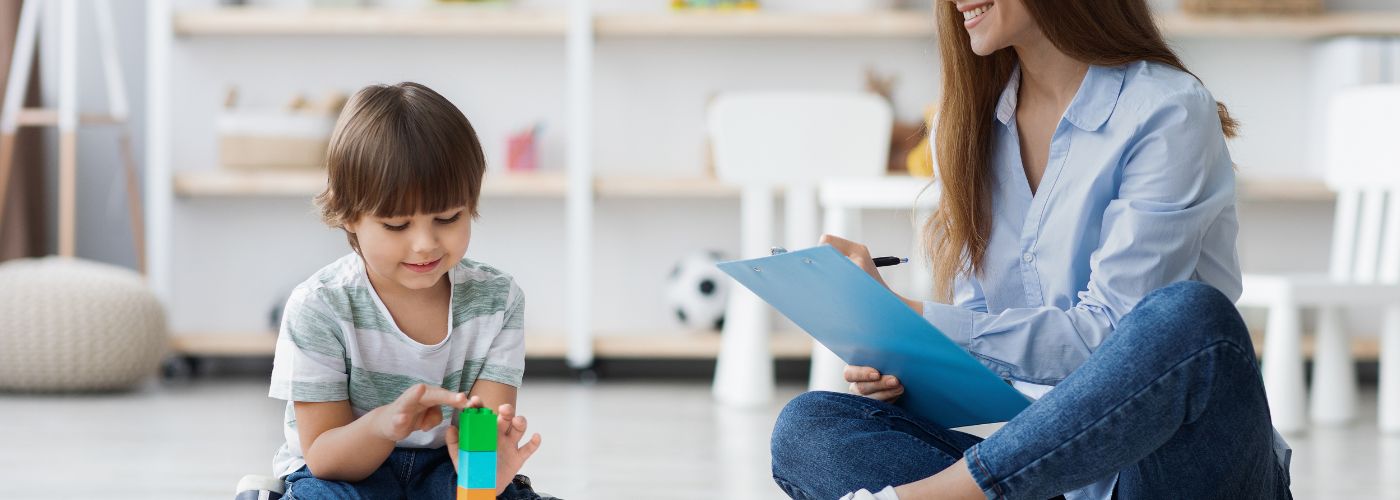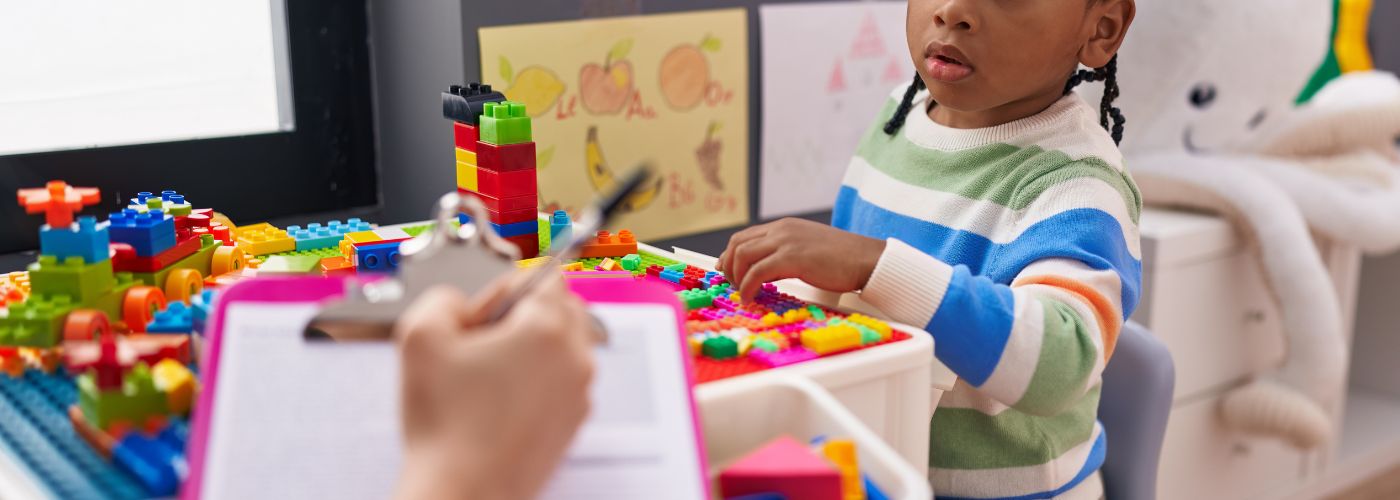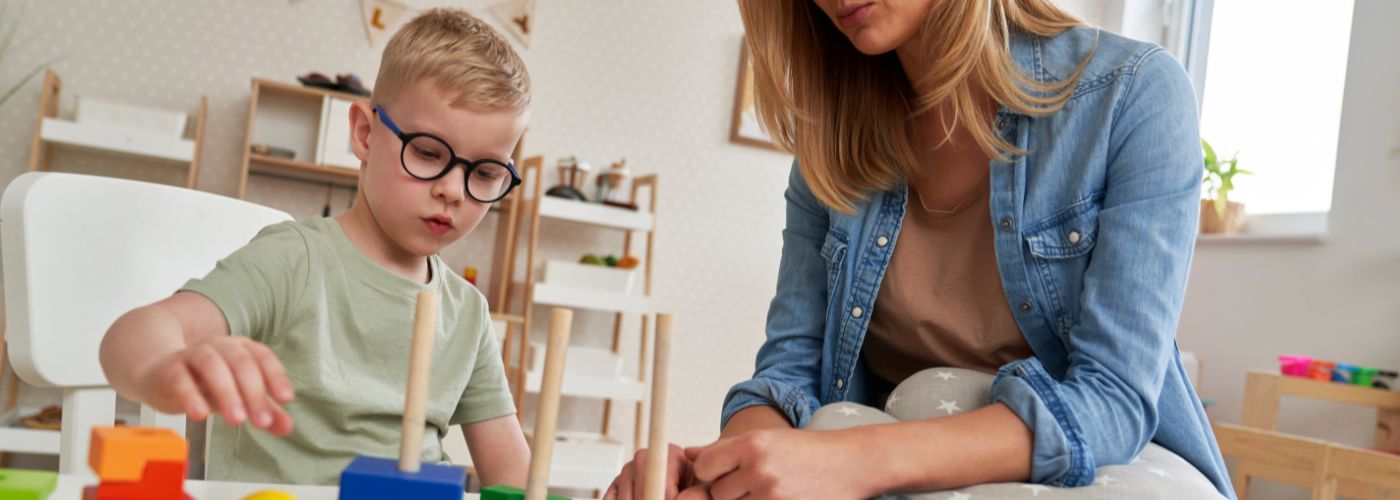In an era where children encounter a range of emotional and psychological challenges, finding effective ways to support their well-being is crucial. Many kids struggle to articulate their feelings or experiences. Enter play therapy—a dynamic approach that utilizes the natural medium of play to help children express themselves and process their emotions. This blog post will examine how does play therapy help with kids and how it truly benefits young ones facing various difficulties in their lives.
What Is Play Therapy?
Play therapy is a dynamic therapeutic approach that utilizes the natural language of children—play—to communicate and process their feelings, thoughts, and experiences.
Unlike traditional talk therapy, where verbal communication dominates the session, play therapy allows children to express themselves in a safe and supportive environment through toys, games, and creative activities. This is a unique and impactful approach to child therapy.
This method recognizes that for many young individuals, verbalizing complex emotions can be overwhelming or even impossible. By engaging in imaginative play, children can explore their inner worlds and release pent-up feelings without confrontation.
Moreover, play therapy empowers children to become active participants in their healing journey. Therapists carefully observe interactions during sessions to decode narratives embedded within the child’s play—a dollhouse might reveal family dynamics while action figures may portray conflicts they’ve encountered at school.
This duality of exploration and expression not only fosters self-awareness but also cultivates resilience as children learn problem-solving skills through role-play scenarios.
Signs Your Child Might Benefit from Play Therapy
If your child exhibits increased anxiety or mood swings, it could be a sign that they may benefit from play therapy. Instead of verbalizing their feelings, younger children often express themselves through play, using toys and games as a medium to process emotions.

If you notice your child retreating into solitary play or showcasing aggression during what should be light-hearted moments, this can indicate underlying issues that need addressing. Engaging in structured play sessions can help them articulate feelings and experiences they might struggle to verbalize.
Another sign is difficulty in social interactions or forming friendships. Play therapy provides a safe environment where children can explore relationships and practice social skills with the guidance of a trained therapist.
This setting not only fosters emotional connections but also enhances their ability to navigate group dynamics effectively.
Comparing Play Therapy to Traditional Talk Therapy
Play therapy and traditional talk therapy serve distinct purposes, especially when it comes to addressing the needs of children. While talk therapy relies on verbal communication, play therapy utilizes the natural language of childhood—play—to unlock a child’s thoughts and feelings.
This modality allows therapists to observe how children express themselves through toys, art supplies, or role-playing scenarios. Rather than merely recounting experiences as they might in a traditional setting, kids can act out emotions and build narratives that might be too complex for them to articulate verbally.
Furthermore, play therapy fosters an immersive environment where children feel safe to explore sensitive topics at their own pace. The therapeutic alliance formed during these sessions is often built on trust established through engaging activities rather than direct questioning.
Traditional talk methods may inadvertently privilege adult perspectives—which could misinterpret or overlook the child’s unique viewpoint—whereas play allows for a more fluid exchange that embraces spontaneity and creativity.
Activities Commonly Used in Play Therapy Sessions
In play therapy, a multifaceted approach enhances emotional resilience and communication skills in children, often utilizing diverse activities tailored to individual needs. One notable method is the use of sand trays, where children construct miniature worlds using figurines and natural materials.
This tactile medium not only allows for creative expression but also serves as a safe conduit for exploring feelings and processing experiences that might be difficult to articulate verbally.

Another engaging activity is puppet play, giving voice to characters that can reflect a child’s inner thoughts or anxieties. As they manipulate puppets, children gain distance from their emotions, making it easier to discuss worries or overwhelming situations indirectly.
This process helps them understand their feelings better while instilling confidence in expressing themselves.
Artistic pursuits like painting or drawing further enrich sessions by enabling complex scenarios through color and form. When children create visual representations of their feelings they communicate nuanced emotional landscapes that can prompt deeper conversations with therapists.
Tips For Parents Doing Play Therapy With Their Kids
When engaging in play therapy with your child, consider approaching it as a shared adventure rather than a structured intervention. Letting go of the need for strict rules opens pathways for spontaneity and genuine expression.
As you create an inviting environment filled with diverse toys and materials, encourage your child to explore their emotions and thoughts freely. Your role is not just to guide but to actively participate by mirroring their joy and curiosity; this fosters trust and strengthens your bond.
Pay attention to nonverbal cues during play—often children communicate profound feelings through actions more than words. If they’re building tall towers or enacting a scene of chaos, join in on their narrative; this deepens understanding of underlying issues they may not yet verbalize.
FAQs About Play Therapy For Kids
In exploring play therapy for kids, one of the most common questions parents have is about its effectiveness. What many might not realize is that children often communicate through play rather than words; this makes play therapy particularly powerful for younger individuals who may struggle to articulate their feelings or experiences.
By engaging in structured play, therapists can uncover emotional and psychological issues that might otherwise remain hidden, allowing children to express themselves in a safe environment.
Another frequently asked question pertains to the age range suitable for play therapy. While it’s beneficial for kids grappling with depression or trauma, older children—up to early adolescence—can also reap significant rewards from this therapeutic approach!

Related Stories
Mindful Practices To Cope With Divorce
Divorce can feel like a storm that turns your life upside down, leaving you lost
Nov
Tips To Identify & Break Cycles of Trauma In Families
The legacy of trauma can haunt families for generations, but it doesn’t have to define
Oct
How To Recognize Avoidant Personality Disorder
Have you ever felt an overwhelming sense of dread at the thought of social interactions,
Sep